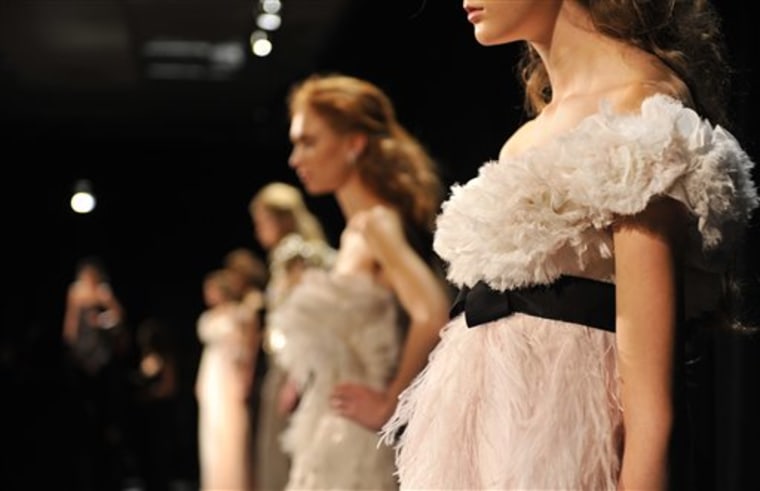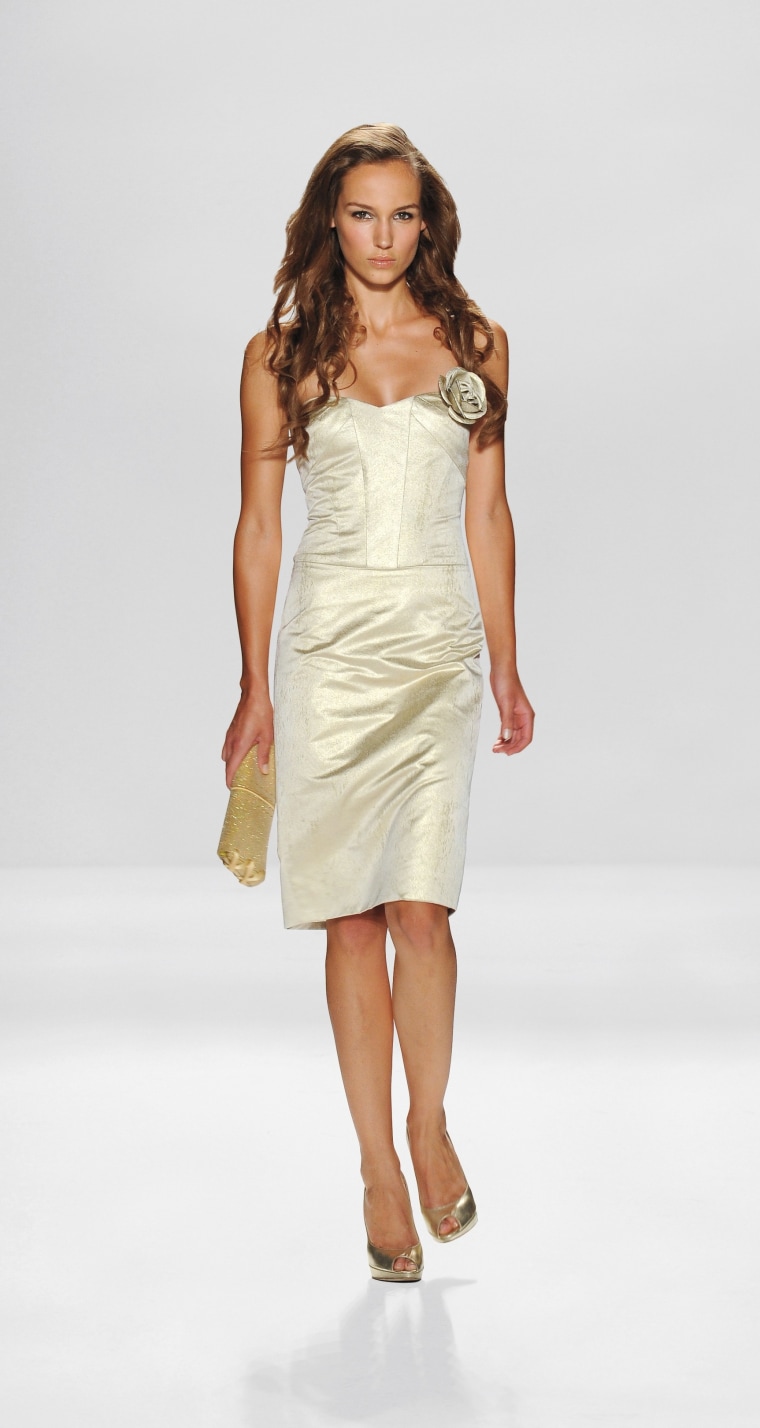When you hear the word "nude," what do you picture?
In fashion, it's a common description of the shade a little darker than champagne, lighter than sand and perhaps with a hint of blush or peach.
But when Michelle Obama wore, in the words of designer Naeem Khan, a "sterling-silver sequin, abstract floral, nude strapless gown" to a state dinner at the White House — and it was reported as such — that sparked questions about the definition of nude and its relation, if any, to the wearer's skin color.
The Associated Press called Mrs. Obama's dress color "flesh" and got immediate retorts: "Whose flesh?" one newspaper editor asked. "Not hers." The description was revised to "champagne."
"We talk of nude now, and there is no one color. It's politically incorrect," says Gale Epstein, creative director and co-founder of undergarment brand Hanky Panky. "There is a wide range for skin-tone colors. Human skin tones are a whole color palette unto themselves."
Epstein says she realized years ago that the brand would need a full range of skin-tone shades. The middle ground of Hanky Panky's dozen or so neutrals is probably taupe, which falls somewhere between the very light chai, which is also the best seller, and the much darker espresso.
Designer Pamella Roland, best known for her eveningwear, also treats nude as a broad color category. "Nudes are a group of elegant shades, but there are a lot of specific shades," she says. "I can't describe a single specific color for nude."
'Universally pleasing colors'That champagne-sand hue, though, is usually what the word is used to describe in fashion shows, stores and the pages of fashion magazines. A quick search for "nude" in the online color finder for Pantone, the company that largely sets color-formula standards for fashion and home-goods manufacturing, turns up a light beige.

It's a popular color in decorating, says Anthony Noberini, design director for Iconix's home brands, including Waverly, but, logically, the names are linked back to where the shade is being used. In the kitchen, for example, the neutrals are oatmeal or flax. When it comes to the increasingly popular coffee shades, Noberini says he'll hear directly from consumers if they think his latte is too light or dark roast too dark.
They're not unlike skin tones, he says, in that everyone thinks the color should reflect the one they personally are most familiar with.
It's not unprecedented for color names to change with the tastes of society. In the 1960s, for example, Crayola changed its flesh color — which resembled white skin — to peach. The company attributes the switch on its Web site at least partially to the civil rights movement.
Nude as a term is too generic at this point, says Epstein. "When you find the right color name, it means more to the customer. It's more literal."
At the high-fashion house of Calvin Klein, which favors a neutral palette, color names are more specific than "nude" and used as internal shorthand. While the sometimes esoteric labels can be a guessing game for the fashion insiders at its runway show — "ether," a light silver, was a favorite for spring — they mostly keep the production team from getting confused, explains women's creative director Francisco Costa.
A sparkly neutral number is a best seller for reality show star-turned-designer Whitney Port, who says she was finding herself so drawn to "flesh tones" when shopping for herself that she made them a big part of her Whitney Eve clothing line.

"I pretty much call it flesh tones. I use the word nude, but there's really an array of shades that covers — it could be mustardy, cream or blush," she says. "They're colors that look great on any color skin; it's a group of universally pleasing colors."
'A sexy and elegant whisper'Celebrity stylist David Zyla breaks down the nude spectrum into five categories — whites, pinks, yellows, beiges and browns — and offers more than 30 narrowed-down names, including porcelain, tawny beige and toasted golden brown.
"There is nothing on a woman more beautiful than having them wear their essence or skin tone," says Zyla, author of "The Color of Style." "It's about the woman and this drape of fabric around her, not about a jeweled collar or puffed sleeve or big skirt."
Roland says she considers nude a range of shades, and loves working with the palette. "Colors are loud. Nudes are a soft whisper — a sexy and elegant whisper. Nude allows a woman to wear her dress instead of the dress wearing her. It's very elegant."
The woman who wears nude is suggesting what might be underneath, expressing "her most basic self," Zyla says. And perhaps that's why changing the name — or using many — makes sense.
"We're in a place in fashion where women are wanting to express their own unique selves," Zyla says. "This array of essence colors is very individual."